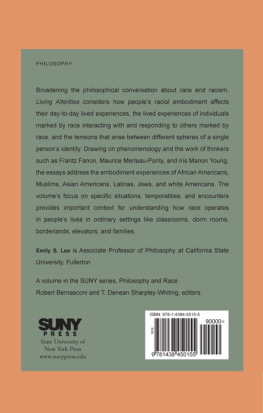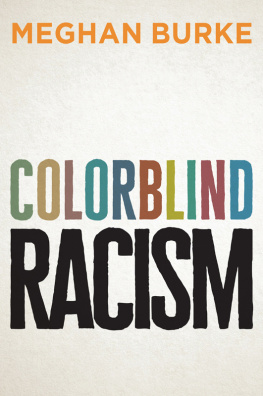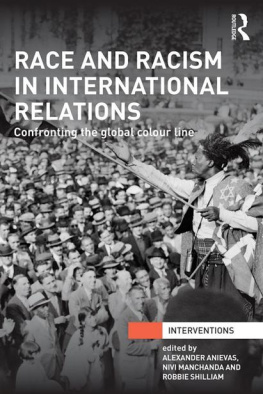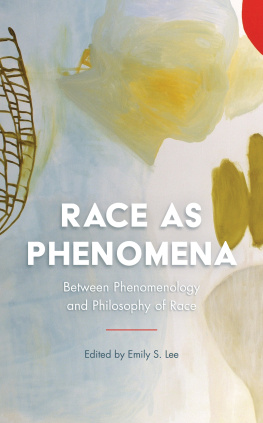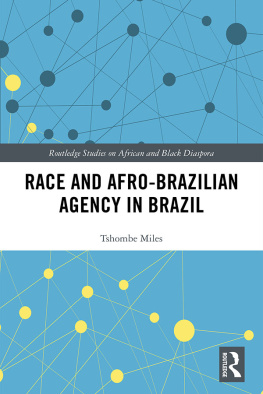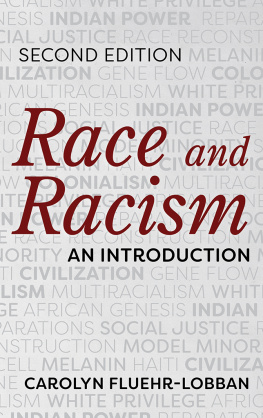Emily S. Lee (editor) - Living Alterities: Phenomenology, Embodiment, and Race
Here you can read online Emily S. Lee (editor) - Living Alterities: Phenomenology, Embodiment, and Race full text of the book (entire story) in english for free. Download pdf and epub, get meaning, cover and reviews about this ebook. year: 2014, publisher: State University of New York Press, genre: Politics. Description of the work, (preface) as well as reviews are available. Best literature library LitArk.com created for fans of good reading and offers a wide selection of genres:
Romance novel
Science fiction
Adventure
Detective
Science
History
Home and family
Prose
Art
Politics
Computer
Non-fiction
Religion
Business
Children
Humor
Choose a favorite category and find really read worthwhile books. Enjoy immersion in the world of imagination, feel the emotions of the characters or learn something new for yourself, make an fascinating discovery.
- Book:Living Alterities: Phenomenology, Embodiment, and Race
- Author:
- Publisher:State University of New York Press
- Genre:
- Year:2014
- Rating:5 / 5
- Favourites:Add to favourites
- Your mark:
- 100
- 1
- 2
- 3
- 4
- 5
Living Alterities: Phenomenology, Embodiment, and Race: summary, description and annotation
We offer to read an annotation, description, summary or preface (depends on what the author of the book "Living Alterities: Phenomenology, Embodiment, and Race" wrote himself). If you haven't found the necessary information about the book — write in the comments, we will try to find it.
Living Alterities: Phenomenology, Embodiment, and Race — read online for free the complete book (whole text) full work
Below is the text of the book, divided by pages. System saving the place of the last page read, allows you to conveniently read the book "Living Alterities: Phenomenology, Embodiment, and Race" online for free, without having to search again every time where you left off. Put a bookmark, and you can go to the page where you finished reading at any time.
Font size:
Interval:
Bookmark:

LIVING ALTERITIES
SUNY Series, Philosophy and Race
Robert Bernasconi and T. Denean Sharpley-Whiting, Editors
LIVING
ALTERITIES
Phenomenology, Embodiment, and Race
EDITED BY EMILY S. LEE

Cover art courtesy of Lisa Goodin.
Published by State University of New York Press, Albany
2014 State University of New York
All rights reserved
Printed in the United States of America
No part of this book may be used or reproduced in any manner whatsoever without written permission. No part of this book may be stored in a retrieval system or transmitted in any form or by any means including electronic, electrostatic, magnetic tape, mechanical, photocopying, recording, or otherwise without the prior permission in writing of the publisher.
For information, contact State University of New York Press, Albany, NY
www.sunypress.edu
Production by Ryan Morris
Marketing by Michael Campochiaro
Library of Congress Cataloging-in-Publication Data
Living alterities : phenomenology, embodiment, and race / edited by Emily S. Lee.
pages cm. (SUNY series, Philosophy and race)
Includes bibliographical references and index.
ISBN 978-1-4384-5015-5 (hardcover : alk. paper) 1. Phenomenology. 2. Human body (Philosophy) 3. RacePhilosophy. 4. Merleau-Ponty, Maurice, 1908-1961. I. Lee, Emily S., 1971editor of compilation.
B829.5.L563 2014
142'.7dc23
2013012907
10 9 8 7 6 5 4 3 2 1
CONTENTS
E MILY S. L EE
C HARLES W. M ILLS
G EORGE Y ANCY
D ONNA -D ALE L. M ARCANO
N AMITA G OSWAMI
D AVID H AEKWON K IM
A LIA A L -S AJI
M ARIANA O RTEGA
E DWARD S. C ASEY
G AIL W EISS
E MILY S. L EE
L INDA M ARTN A LCOFF
ACKNOWLEDGMENTS
L et me begin by thanking all the contributors to this anthology. It is a pleasure to bring together in this volume so many philosophers whose work I have long admired. It is especially wonderful to discover not only that they write such important philosophy, but that their generosity matches their professionalism.
I want to also thank California State University at Fullerton. Some of the contributions from this book were originally presented at the 40th Annual Philosophy Symposium on Phenomenology, Embodiment, and Race in 2010. This volume could only come together because the philosophy departmentboth its faculty and its studentscarry on such great traditions that are well supported by the university.
Id like to thank Lisa Jong-Soon Goodlin for permission to use her piece, Untitled, (ducks) from the series, Lost and Found, as the cover art. I have been a long admirer of Goodlins art; see more of her work at lisagoodlin.com.
Last, but not least, I want to thank my circle of family and friends. I hope you know who you are. Without you, I cannot imagine how to live my day-to-day life.
INTRODUCTION
E MILY S. L EE
Race and the Relevance of Embodiment
P hilosophy of race has explored many reasons for the history of race and racism within the context of a desire for empire building and within individual prejudices. Empire building and colonialism have been relegated more or less as untenable practices and ambitions. Most present-day societies legally prohibit intentional individual racism. So, to explain the persistence and tenacity of racism, philosophy of race has more recently focused on racism as embedded in the social/institutional structures of society and the subconscious and even unconscious levels of consciousness. Both these levels do not directly address the materiality of race. And yet both the social structural and the individual subconscious levels of analysis rely on perceiving the embodiment of race. A focus on race, on the material, the physical features of race may shed more light on racisms perseverance.
Adamantly insisting on the pivotal role of embodiment, Patricia Williams writes, [t]he simple matter of the color of ones skin so profoundly affects the way one is treated, so radically shapes what one is allowed to think and feel about this society, that the decision to generalize from such a division is valid. These intimate moments give rise to distinct experiences that accumulate into a particular life.
Embodiment in General
As central as embodiment appears to be in the question of race, philosophy of race has so far only limitedly explored the role of embodiment. At least part of the initial focus on the conscious intent and on the unconscious projections of racism to the neglect of the role of embodiment might reflect philosophys own dualistic theoretical history of dividing ideas and matter; thinking things and nonthinking things; consciousness and the body. This split reflects the philosophical tradition from Plato and Descartes, which not only insists on the possibility of such separation, but also prioritizes ideas, thought, and the inner workings of the subject. Because of this metaphysical distinction, and its prioritization of consciousness, the understandings of race and the analysis of racism may have underemphasized the role of embodiment because the body has been relegated to the status of unthinking matter.
Of course, a tradition in philosophy argues for metaphysical monism and denies any substantive distinctions between thinking beings and nonthinking beings. The most persuasive argument against dualism and de facto for monism is that if the world is metaphysically reducible to two kinds of beings, how do the two beingscompletely different in kindhave contact or awareness of each other?
Without insisting on either position here, much recent work argues that human beings particular form of embodiment conditions cognitive processes. Human bodies upright postures, human bodily distinctions of front and back, as well as the limitations of human body movements impact human cognitive connections. For example, Hubert Dreyfus has been arguing for a while now against mainstream cognitive theorys position that the mind functions through representations; the position that the mind relies on representations reflects dualist conceptions. Only with the complete separation of the mind and the body does the mind require a representation of what appears or occurs in the physical world. The mind and the body cannot be separated; they are reliant on each other. Hence, to disregard the role of the body in thinkingincluding thinking about racein order to explore racism only as a product of thought as conscious or unconscious, does not suffice for understanding the embodied conditions of race and racism.
In feminist theory, even working within a dualistic framework, discussions have flourished focusing on the relation between the materiality of embodiment in regard to the nature of sex and the social construction of the cultural ideas circumscribing gender. Hence, it is not clear why race theory that works within philosophys dualistic framework has not followed the trajectory of discussing the relation between the material embodiment of race and the constructed significations of race and racism. Instead, in race theory, metaphysical dualism and its prioritization of consciousness primarily leads to the neglect of embodiment. Accordingly, early feminist foremothers, such as Mary Wollstonecraft, argued that the education of womenand not their biological makeupmore greatly influences womens development; Simone de Beauvoir succinctly stated, women are made not born. The early feminists emphasized the role of society in obfuscating the ability to see womens true capabilities. Because of the need to emphasize the role of society in limiting womens development, the role of nature and biology was de-emphasized.
Font size:
Interval:
Bookmark:
Similar books «Living Alterities: Phenomenology, Embodiment, and Race»
Look at similar books to Living Alterities: Phenomenology, Embodiment, and Race. We have selected literature similar in name and meaning in the hope of providing readers with more options to find new, interesting, not yet read works.
Discussion, reviews of the book Living Alterities: Phenomenology, Embodiment, and Race and just readers' own opinions. Leave your comments, write what you think about the work, its meaning or the main characters. Specify what exactly you liked and what you didn't like, and why you think so.

